Simplify Phase Noise Test up to 54GHz with the SSA-X Signal Source Analyzer


Optimize your phase noise analysis cycle time today
Building on 35 years of phase noise expertise, the Keysight SSA-X signal source analyzer provides a one-box signal source analysis solution with a simplified set-up, excellent sensitivity and speed, and versatile test options tailored to your needs. With input signals up to 54 GHz and offsets up to 1 GHz, the SSA-X helps you overcome all your absolute and residual phase noise measurement challenges.
Phase noise measurements determine the short-term frequency stability of radio frequency (RF) components like local oscillators (LOs), mixers, and amplifiers. To develop radar and digital communication systems, engineers must accurately measure phase noise while minimizing test time.
What is phase noise?
Phase noise represents the degree to which an oscillating source produces the same frequency over a specific period. For short-term frequency stability, engineers measure the variation in signal frequency for a duration of less than a few seconds.
If the oscillator in Figure 1 produced a pure sine wave, it would appear as a delta function in the frequency domain and contain no phase noise.
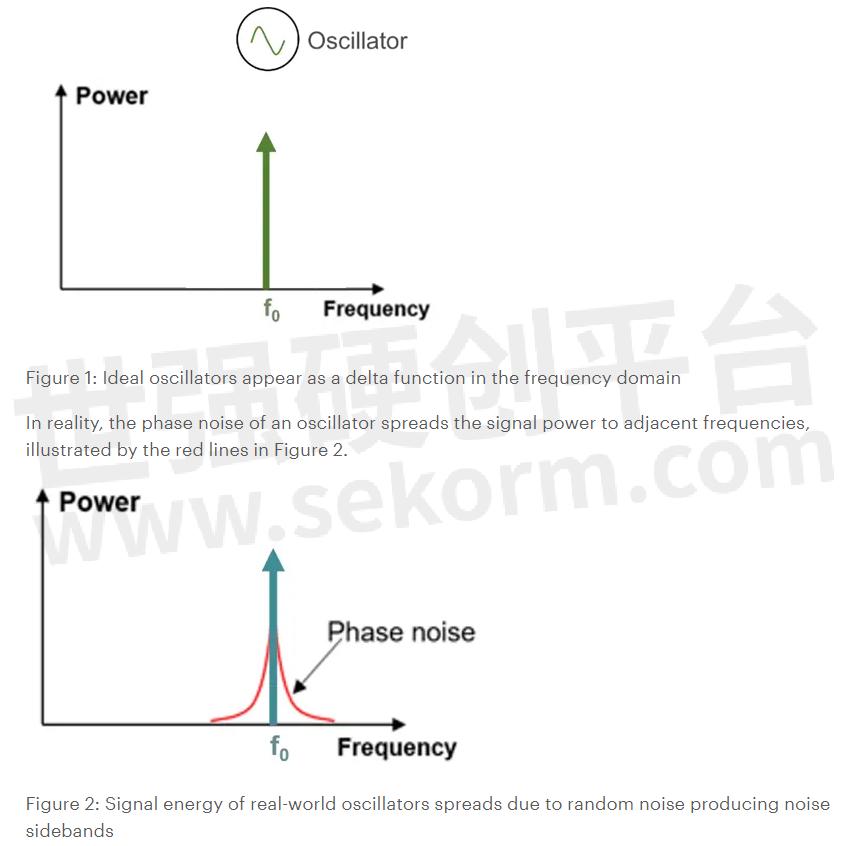
These noise energy sidebands, caused by thermal, shot, and flicker noise, appear symmetric about the carrier.
How to measure phase noise
Single sideband (SSB) phase noise, L(f), refers to the ratio of power density at an offset frequency from the carrier to the total power of the carrier signal, illustrated in Figure 3.
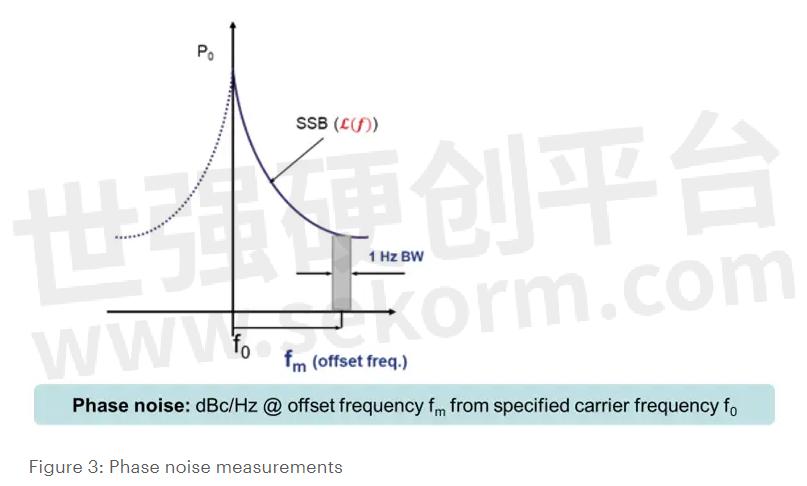
Phase noise measurements use an offset frequency, fm, relative to the carrier. Since the noise energy sidebands appear symmetrically around the carrier, measuring at a single sideband sufficiently captures the phase noise. Measuring the power spectral density of the noise energy in a 1 Hz measurement bandwidth results in units of dBc/Hz.
Absolute phase noise
Absolute phase noise refers to the phase noise produced by a 1-port device such as an oscillator, as shown in Figure 4. Engineers consider absolute phase noise a key figure-of-merit for signal generators like the Keysight VXG vector signal generator.
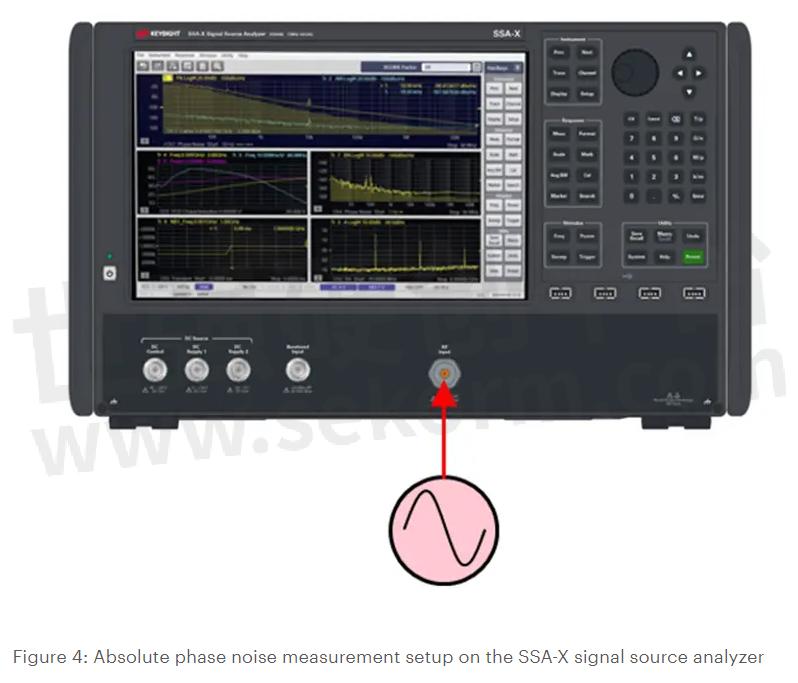
Residual phase noise
Residual phase noise, or additive noise, refers to the noise added to a signal when processed by a multi-port device, like an amplifier, as shown in Figure 5. To accurately measure the multi-port device's noise contribution, residual noise measurements require the removal of the source’s noise.
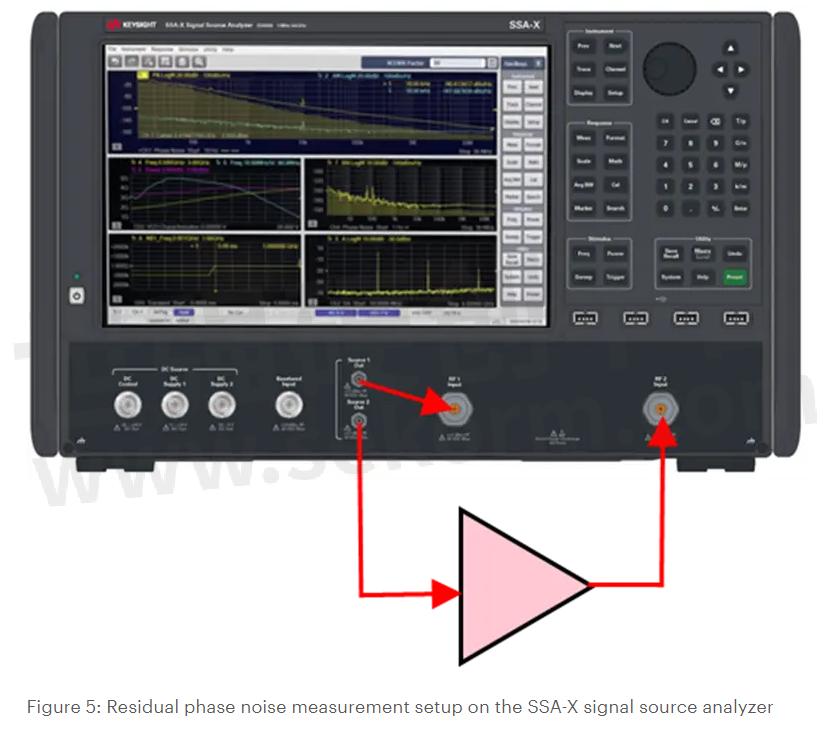
The importance of phase noise for aerospace and defense systems
Radars detect small frequency shifts of return echoes to determine target velocity. Figure 6 shows a radar system block diagram. Let’s consider how the phase noise of critical components in the radar system impacts performance.
The stable local oscillator (STALO) and coherent local oscillator (COHO) underpin the functionality of the radar system. Any phase impairments from the STALO or COHO signals multiply when upconverted to higher frequencies, which causes a reduction in signal-to-noise ratio (SNR).
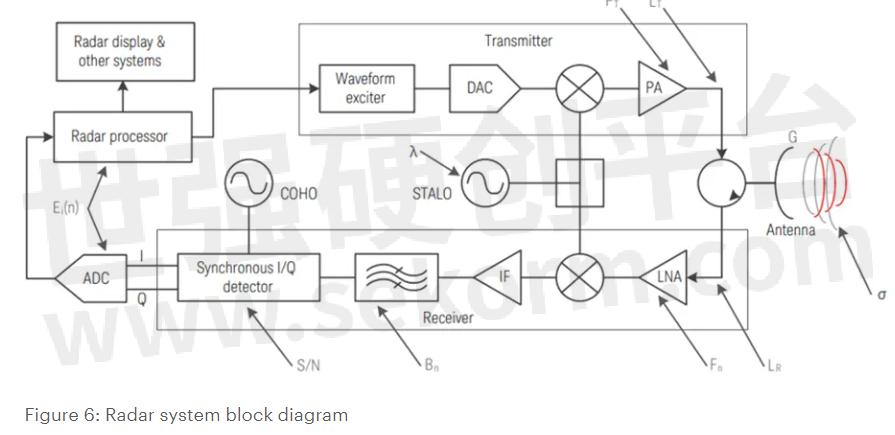
Phase noise on the transmitted signal masks the target Doppler signal, as shown in Figure 7. Compared to the clutter from stationary objects, the return from the moving target signal is small. While filtering effectively removes the clutter, it fails to account for the random noise, resulting in missed targets and reduced accuracy.
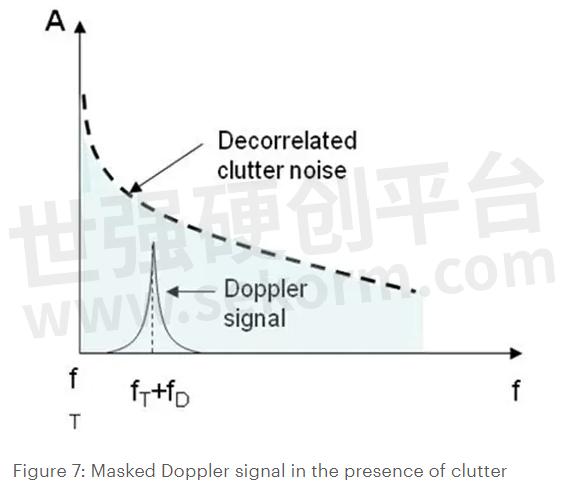
The importance of phase noise for digital communication systems
In digital communications systems, phase noise in the digital transmitter and receiver causes increased bit error rate (BER). Figure 8 shows a digital communication system block diagram. Phase noise in this system causes symbol skewing, spectral regrowth, and channel interference.
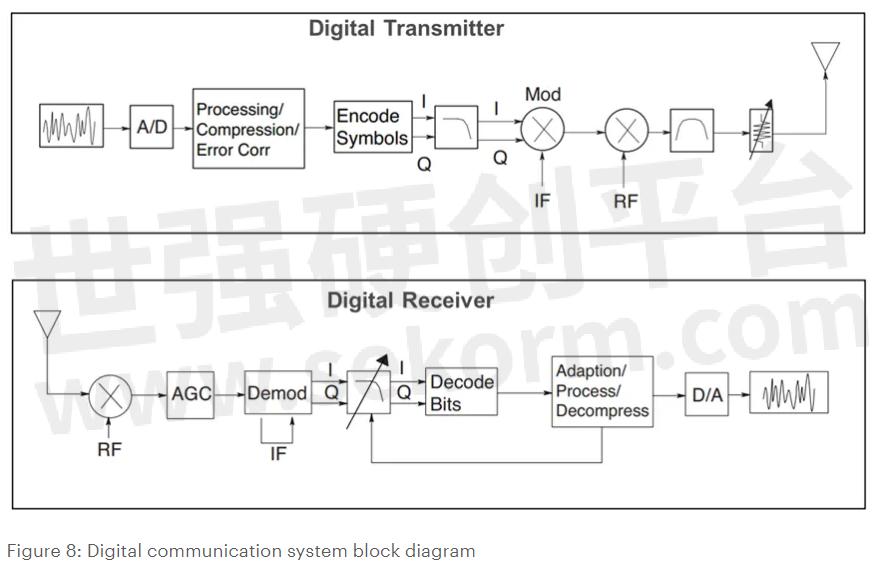
Symbol skew results in detection errors. As the signal's power increases, the I and Q amplitudes increase, causing the symbols to spread farther away from the origin. Symbols further from the origin spread even more, as shown in green in Figure 9.
Higher-order modulation formats mean narrower symbol decision boundaries, as illustrated by the black gridlines in Figure 9. As a result, skewing increases the symbol and bit error rates for higher-order modulation formats.
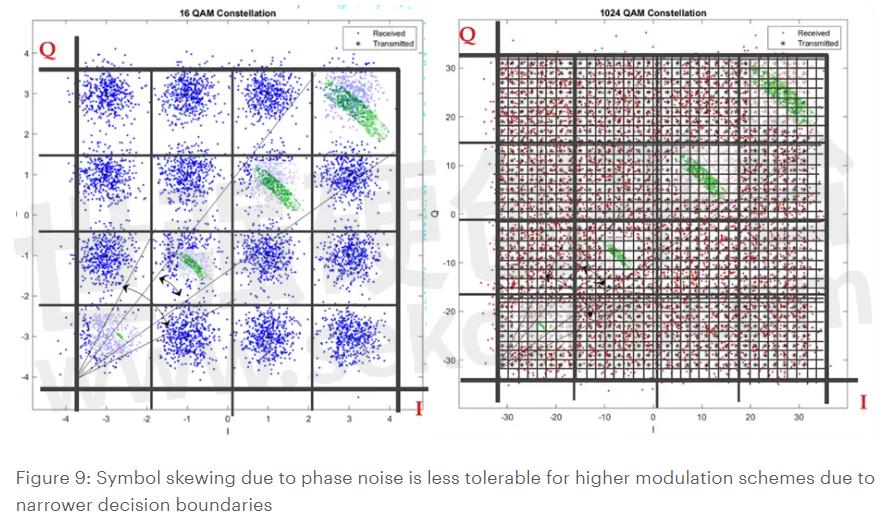
Sensitivity in a phase noise analyzer refers to the lowest phase noise level that the instrument is capable of accurately measuring. Engineers use cross-spectral averaging, also known as cross-correlation (XCORR), to eliminate instrument noise. This increases the accuracy of the measurement but also increases test time.
The initial sensitivity (at 1 XCORR) and the speed at which the instrument reduces the noise floor through XCORR determine the phase noise analyzer’s quality. The system noise of the instrument should be lower than the noise of the device-under-test (DUT). Engineers typically accept a margin of 10dB.
Phase noise measurement challenges
Accurate phase noise measurements require low noise sources, complex measurement setups, fast XCORR methods, and the ability to switch between absolute and residual phase noise measurement setups. Often, developers need additional analysis methods like spur search and transient analysis for complete device characterization.
SSA-X architecture delivers speed and sensitivity for phase noise measurements
The SSA-X signal source analyzer offers an all-in-one phase noise measurement solution up to 54 GHz. This comprehensive measurement platform supports not only high-sensitivity absolute and residual phase noise analysis but also a variety of supplemental measurement software applications, including VCO characterization, frequency transient analysis, and spectrum analysis, as shown in Figure 10.

The SSA-X uses IQ demodulation to measure the phase noise. The signal travels through an internal power divider, splits, and downconverts to an intermediate frequency (IF). Identical measurement receivers with low phase noise LOs enable XCORR. IQ demodulators allow measurement of the phase noise and AM noise simultaneously, up to 30 MHz; beyond 30MHz offset, the instrument measures the sum of phase noise / AM.
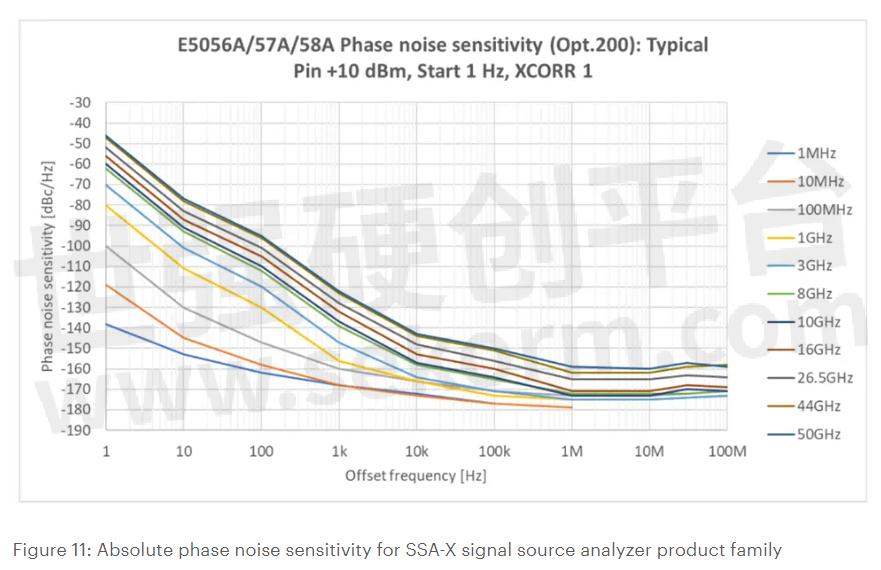
Get started with simplified phase noise analysis
Leveraging decades of test and measurement expertise, the SSA-X signal source analyzer offers a simplified solution for phase noise testing up to 54 GHz. It delivers absolute and residual phase noise analysis with enhanced sensitivity on a simplified setup.
Phase noise measurements play a crucial role in RF technology development, impacting the efficacy of radar and digital communication systems. Optimize your test cycle time with the SSA-X and ensure accurate phase noise analysis.
- +1 Like
- Add to Favorites
Recommend
This document is provided by Sekorm Platform for VIP exclusive service. The copyright is owned by Sekorm. Without authorization, any medias, websites or individual are not allowed to reprint. When authorizing the reprint, the link of www.sekorm.com must be indicated.





















































































































































































































































































































































































































































































































































































































































































































































































































































































































